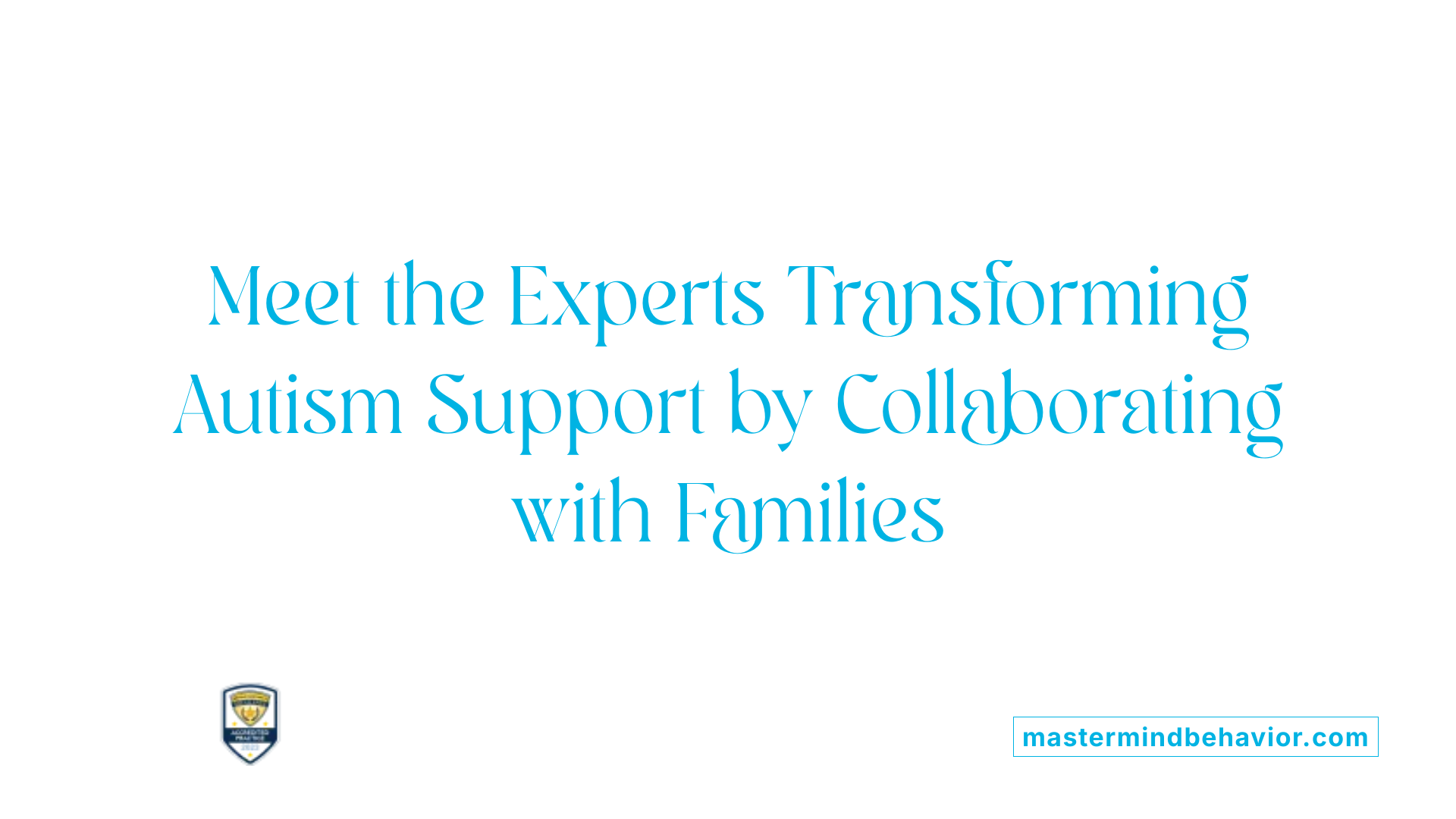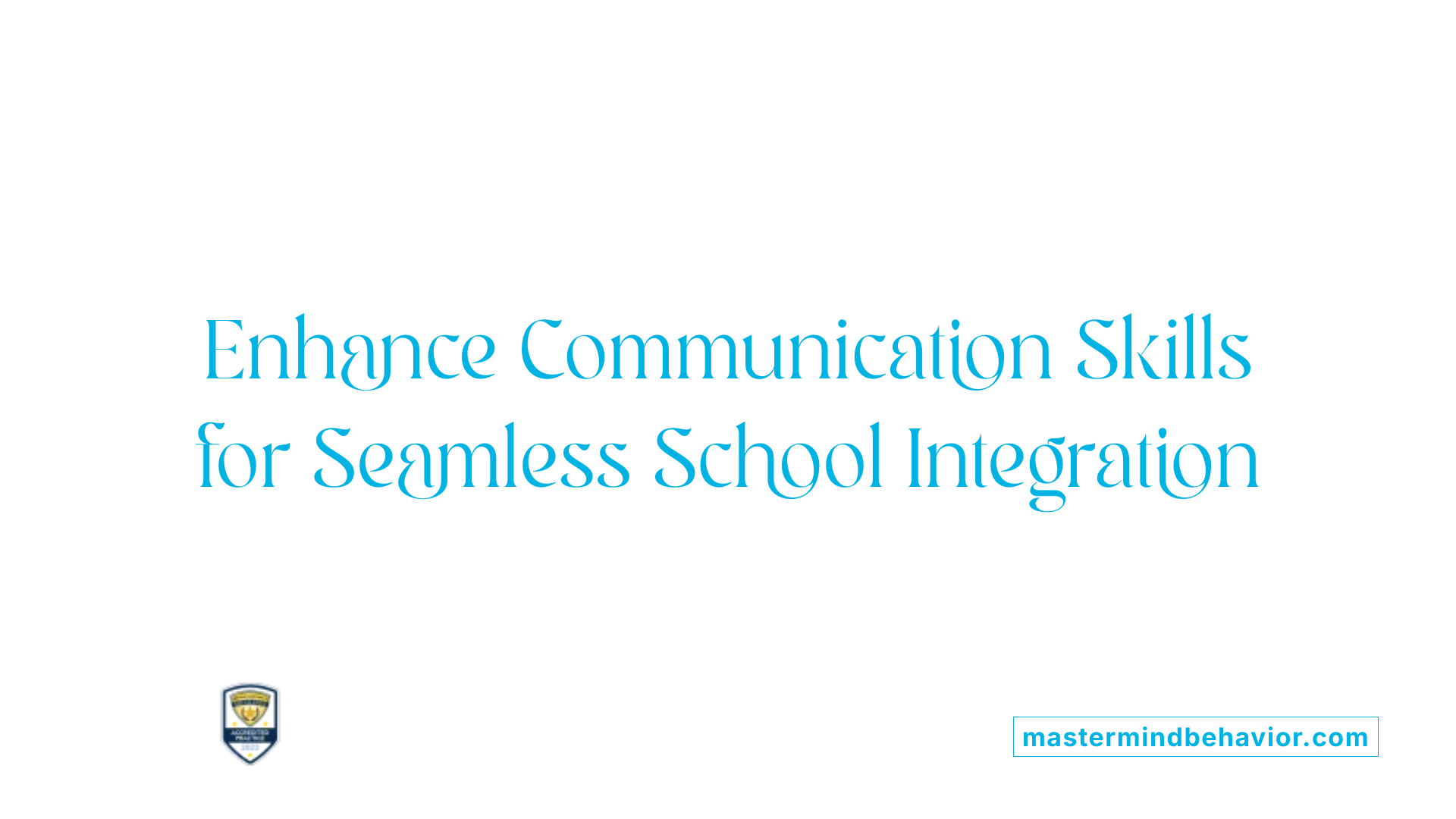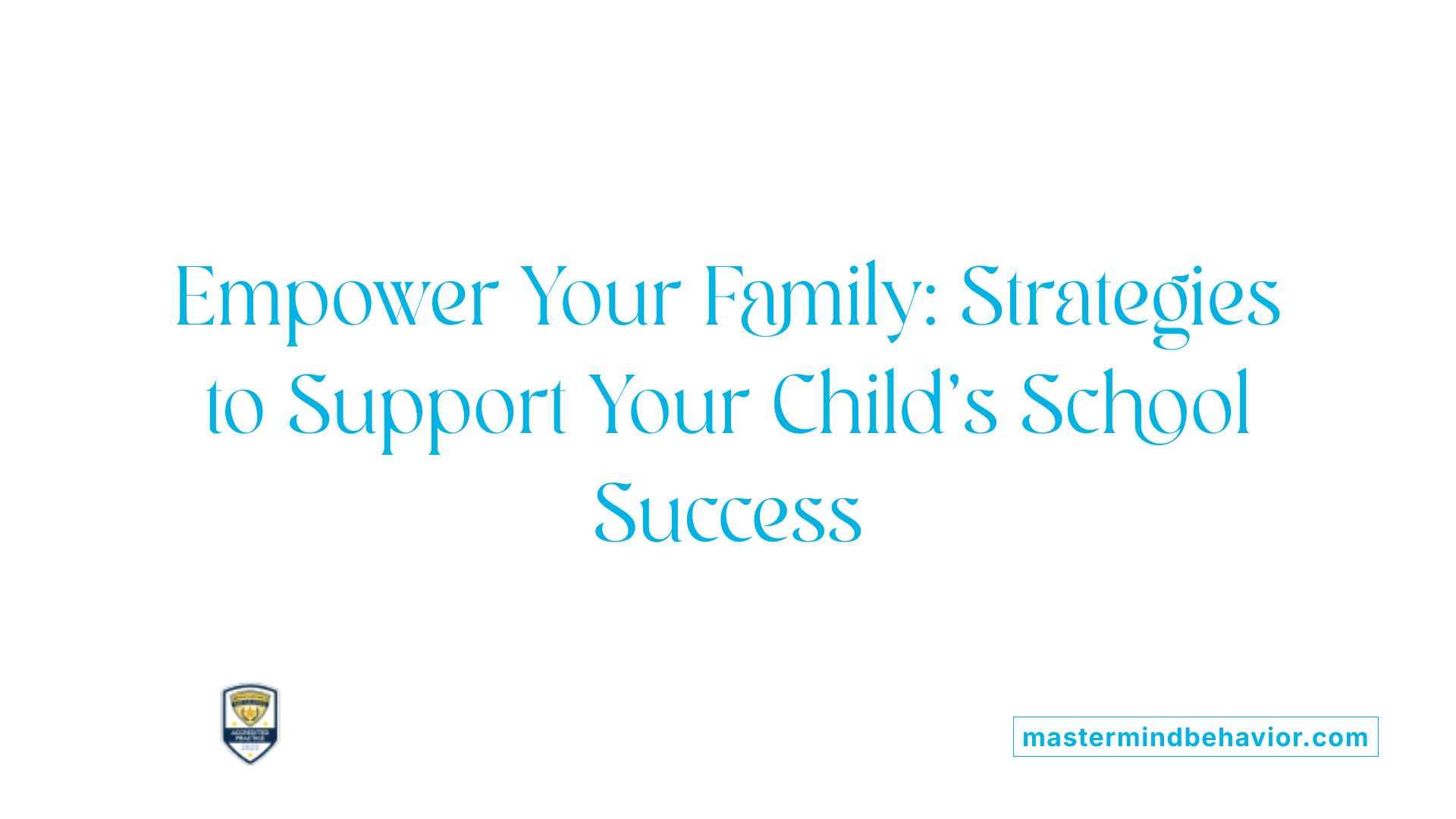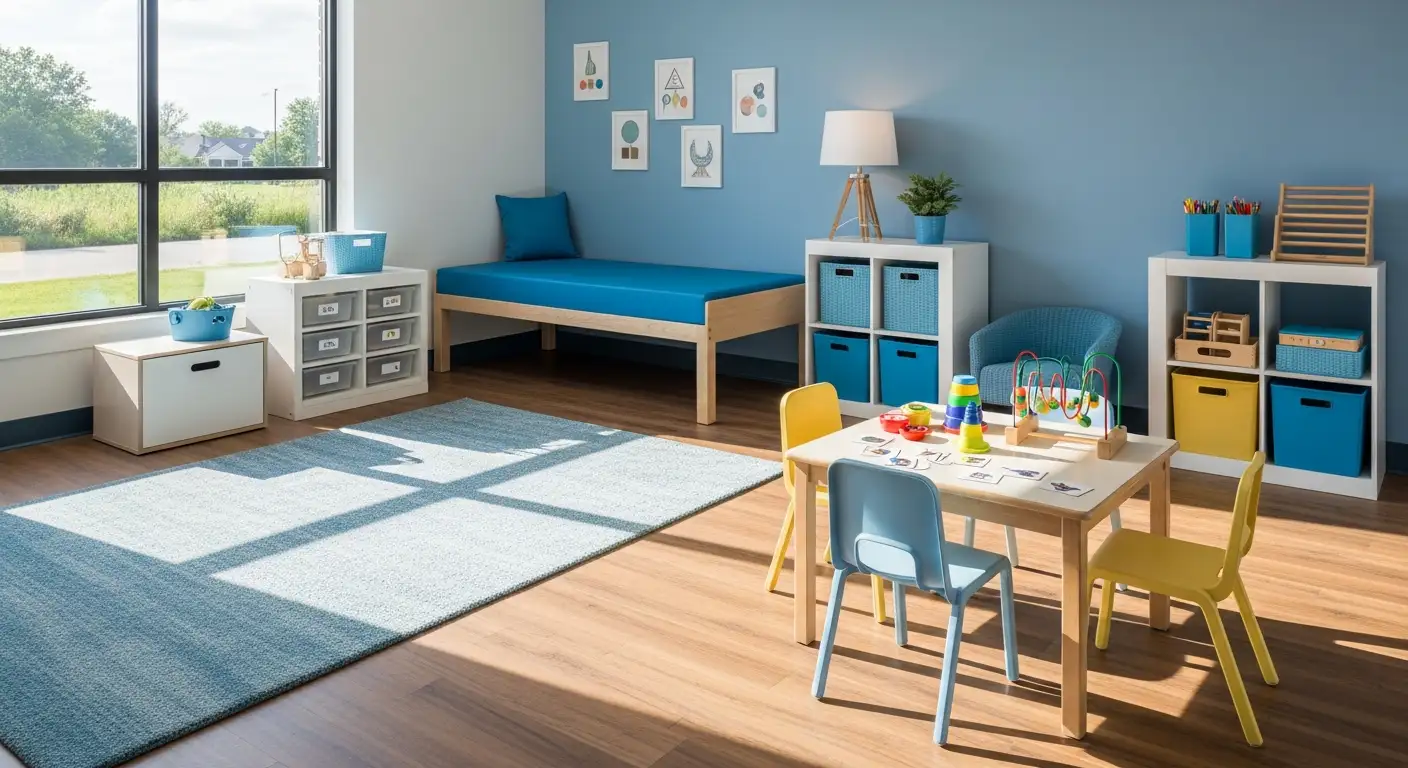How ABA Therapy Improves Adaptation To New School Environments

Understanding ABA Therapy and Its Role in School Adaptation
Transitioning to a new school environment poses unique challenges for children with autism spectrum disorder (ASD), particularly in communication, socialization, and adapting to routines. Applied Behavior Analysis (ABA) therapy offers a comprehensive, evidence-based approach tailored to address these challenges, promoting smoother transitions and better integration into academic settings. This article explores how ABA therapy’s individualized strategies facilitate adaptation to new school environments by enhancing communication, behavior, and social skills needed for success at school.
What Is Applied Behavior Analysis (ABA) Therapy and How Does It Work for Individuals with Autism?

Definition and Scientific Basis of ABA Therapy
Applied Behavior Analysis (ABA) therapy is an evidence-based intervention rooted in the science of learning and behavior. It focuses on understanding how behaviors are influenced by environmental factors and uses systematic observation and measurement to guide treatment. ABA is widely used to support individuals with autism by breaking down complex skills into manageable parts and teaching them using structured and data-driven methods.
Core Principles: Antecedents, Behaviors, Consequences
ABA operates on the basic principle that behavior is influenced by antecedents (events before a behavior), the behavior itself, and consequences (what follows the behavior). By carefully analyzing these elements, therapists identify triggers for behaviors and apply appropriate interventions to encourage desirable skills while reducing problematic behaviors.
Techniques: Positive Reinforcement and Discrete Trial Training
Positive reinforcement is a cornerstone technique in ABA, where desired behaviors are rewarded to increase their frequency. Discrete Trial Training (DTT) is a structured teaching method that involves breaking skills into small steps and reinforcing each step systematically. Other strategies include naturalistic teaching and pivotal response treatment, all focused on facilitating skill acquisition and behavior management.
Targeted Areas: Communication, Social Skills, Daily Living Skills
ABA targets critical areas such as communication, social interaction, independence, and academic abilities. It helps individuals develop functional communication skills—both verbal and non-verbal—improve social understanding like turn-taking and recognizing social cues, and gain essential daily living skills such as organization and time management.
Role of Certified Professionals
Certified ABA professionals (BCBAs) design individualized treatment plans based on comprehensive assessments that identify behavioral targets. They oversee therapy delivery, track progress through data analysis, and collaborate with families and educators to ensure skills generalize beyond therapy sessions.
Long-Term Intensive ABA Therapy Outcomes
With consistent and long-term ABA therapy, many individuals with autism experience meaningful improvements in language, cognitive abilities, social engagement, and independent functioning. This supports better adaptation to school and community settings and enhances overall quality of life.
Who Provides ABA Therapy Services and How Do They Collaborate with Families?

Certified Professionals Delivering ABA Therapy
ABA therapy services for individuals with autism are delivered by trained and certified professionals including Board Certified Behavior Analysts (BCBAs) and behavior technicians. These experts possess specialized skills in behavioral analysis and autism spectrum disorders, enabling them to develop and implement effective behavior intervention plans.
Specialized Companies and Therapy Centers
Many ABA services are offered through dedicated therapy centers and specialized companies such as RightWay ABA, which provide flexible and personalized treatment options. These providers deliver therapy in various settings, including in-home, community, and center-based environments to best suit the child’s needs.
Role of Multidisciplinary Teams
In addition to ABA specialists, multidisciplinary teams often include speech and occupational therapists. This collaborative approach helps address a broad range of developmental needs, ensuring holistic support for the child across communication, social skills, and motor functions.
Importance of Family Collaboration and Training
Family involvement is a crucial component of ABA therapy. Certified professionals actively engage parents and siblings by providing training and resources that empower families to support skill development and behavior management outside of sessions.
Personalized Treatment Plans Involving Parents and Siblings
Individualized treatment plans are crafted based on comprehensive assessments and data analysis. Families are involved throughout the process to ensure goals align with the child’s strengths and challenges, fostering progress in real-life contexts.
Flexible Delivery Modes
ABA therapy’s flexibility allows for sessions during days, evenings, or weekends in various settings. This adaptability ensures consistent intervention while accommodating family schedules and the child’s environmental comfort, supporting better generalization of skills.
Common Goals of ABA Therapy in Supporting Children Transitioning to School

What are the common goals and outcomes of ABA therapy in treating autism?
ABA therapy primarily aims to enhance communication abilities, both expressive and receptive, helping children express themselves clearly and understand others effectively. Social interaction improvements are also a main focus, promoting better peer engagement and smoother community participation.
The therapy targets increasing daily living skills and academic competencies, enabling children to perform essential tasks and succeed in school settings. Simultaneously, ABA works to reduce problematic behaviors that could disrupt learning or social integration.
Foundational skills such as imitation, maintaining attention, and following directions are crucial targets. ABA employs techniques like positive reinforcement, prompting, and task analysis to build these skills systematically.
The overarching goal is to foster independence and improve the child’s quality of life by equipping them with the tools to adapt confidently to school and social environments. Long-term, children benefit from better communication, social skills, and adaptive behaviors that support successful school transitions and continued development.
Tailoring ABA Interventions to School Environments
How are comprehensive behavioral assessments used in school settings?
ABA therapy in schools begins with thorough behavioral assessments, such as functional behavior assessments (FBAs). These evaluations identify specific behavioral targets by systematically studying a child's functional challenges. This information guides the creation of structured interventions tailored to each student's unique needs.
What are individualized behavior intervention plans?
Using assessment data, certified professionals develop individualized behavior intervention plans (BIPs). These plans include clear goals, strategies, and measurable outcomes designed to improve adaptive behaviors while reducing problematic actions. Collaboration between educators, therapists, and families ensures consistent implementation across environments.
How do antecedent modifications and reinforcement strategies work in classrooms?
Classroom ABA interventions often involve antecedent modifications—adjusting environmental triggers before behaviors occur—to reduce challenging behaviors. Positive reinforcement is used to encourage desired behaviors by rewarding students when they meet target goals. This combination helps create a supportive learning atmosphere that fosters success.
What ABA techniques are commonly used in schools?
Several established ABA methods are implemented to enhance learning and social skills:
- Discrete Trial Training (DTT): Breaking skills into small, teachable units with repetitive practice and reinforcement.
- Natural Environment Teaching (NET): Teaching skills through natural interactions and daily routines.
- Pivotal Response Treatment (PRT): Targeting pivotal areas like motivation and response to multiple cues to produce broad improvements.
How are visual supports and task analysis utilized?
Visual supports such as schedules and cues are used to aid organization and routine completion, which is critical for students with executive functioning difficulties. Task analysis breaks complex tasks into manageable steps, helping children learn and perform activities more independently.
What environmental modifications help foster adaptive behaviors?
Modifications may include rearranging classroom setups, reducing distractions, or providing quiet areas to minimize sensory overload. These changes promote positive behavior, improve focus, and accommodate students' diverse sensory and social needs.
Together, these ABA strategies in school settings empower children to build communication, social skills, and independence, enhancing their overall academic and social experiences.
Building Communication Skills for Better School Adaptation

Supporting atypical language development and communication preferences in autistic children
Children with autism often experience unique language development patterns, including delays, regressions, or intermittent use of speech. Recognizing these variations is essential in providing effective support. RightWay ABA tailors interventions to each child's communication style, which may range from direct language use to unique invented words, ensuring therapy respects and embraces individual preferences.
Functional Communication Training (FCT) to replace problematic behaviors
Functional Communication Training is a cornerstone ABA strategy aimed at teaching children alternative, appropriate ways to express their needs instead of engaging in challenging behaviors. By focusing on functional communication, children learn to convey their wants or discomfort effectively, which improves social interactions and reduces frustration.
Addressing challenges in interpreting nonverbal cues, body language, and social communication
Many autistic children find interpreting body language, facial expressions, and nuances of conversation difficult. ABA therapy employs modeling and prompting techniques to teach these nonverbal communication skills explicitly, helping students better navigate social cues and engage more comfortably in social settings.
Modeling, prompting, and peer-mediated interventions to foster social reciprocity
Social reciprocity, such as turn-taking and cooperative play, is cultivated through targeted interventions. ABA therapists use modeling to demonstrate appropriate behaviors, prompting to guide responses, and peer-mediated activities to encourage natural social exchanges, reinforcing positive social skills in real-life contexts.
Adapting communication approaches to individual styles and needs
Because communication preferences vary widely among autistic individuals, RightWay ABA designs personalized plans that consider each child's strengths and comfort zones. This flexible approach ensures that interventions are meaningful and effective, fostering better engagement and progress.
Enhancing both spoken language and nonverbal communication competencies
ABA's structured teaching methods, including Discrete Trial Training and Natural Environment Teaching, focus on building both verbal and nonverbal skills. Through reinforcement and task analysis, children improve in organizing thoughts, understanding social rules, and expressing themselves confidently across different settings.
Enhancing Social Skills and Emotional Regulation through ABA
Teaching cooperation, reciprocity, and turn-taking skills
ABA therapy employs structured techniques such as modeling, prompting, and peer-mediated interventions to help children with autism develop cooperation, reciprocity, and turn-taking during interactions. These foundational social skills are vital for successful communication and relationships.
Use of reinforcement techniques to encourage positive social behaviors
Positive reinforcement plays a central role in ABA by rewarding desirable behaviors like sharing, waiting for turns, and engaging appropriately with peers. This encourages children to repeat these behaviors naturally over time.
Interventions for emotional self-regulation: coping strategies and self-monitoring
ABA incorporates interventions like self-monitoring and coping strategies to help children manage their emotions effectively. These techniques teach children to recognize their feelings and use calming methods to handle stress or frustration.
Managing stress and impulses to support school adjustment
Antecedent modifications and tailored behavior plans assist children in managing impulses and stress triggers, easing their adaptation to school routines. These proactive strategies create a supportive environment that reduces challenging behaviors.
Peer interaction facilitation via structured social skills training
Structured social skills training sessions, often conducted in group or naturalistic settings, encourage peer interactions. This helps children practice new social behaviors in supportive, real-world contexts, further enhancing their confidence and communication.
Generalization of social and emotional skills beyond therapy to school and community
A hallmark of ABA is ensuring skills learned in therapy transfer to everyday life. Through family involvement and flexible therapy settings, children apply social and emotional regulation skills at home, in school, and throughout their communities, promoting independent and confident engagement.
| Aspect | ABA Techniques | Description |
|---|---|---|
| Social Skills | Modeling, prompting, peer-mediated | Teaching cooperation, turn-taking, reciprocity |
| Reinforcement | Positive reinforcement | Encouraging desirable social behaviors |
| Emotional Regulation | Self-monitoring, coping strategies | Helping children manage emotions |
| Stress & Impulse Management | Antecedent modifications | Supporting better adjustment to school routines |
| Peer Interaction | Structured social skills training | Facilitating practice of social behaviors |
| Generalization of Skills | Family collaboration, naturalistic | Promoting real-world use of learned skills |
Empowering Families to Support School Transitions

How does family training and involvement enhance therapy processes?
Family collaboration is central to RightWay ABA's approach, recognizing that parents and siblings play a vital role in a child’s progress. Training equips families with practical skills to encourage communication, social interaction, and independence beyond therapy sessions. This involvement ensures that therapeutic strategies are effectively reinforced in everyday environments.
What strategies can parents and siblings use to reinforce skills at home and school?
Families are guided to use modeling, prompting, and positive reinforcement techniques consistent with ABA methods. For example, parents can practice communication exercises tailored to their child’s preferences and encourage social skills during play or routine activities. Siblings, when engaged, help create natural social opportunities, promoting cooperation and reciprocity.
How does flexible scheduling benefit family needs?
RightWay ABA offers adaptable scheduling, including days, evenings, and weekends, accommodating different family routines. This flexibility reduces stress, allowing consistent therapy without interfering with school or work commitments, fostering sustained progress.
In what ways do therapists, educators, and families collaborate?
Effective communication channels enable therapists and educators to share insights and coordinate behavior plans, ensuring consistent approaches across settings. Families become advocates, relaying school experiences and adjusting home strategies accordingly, creating a coherent support system.
How does family support build confidence and independence?
Empowered families encourage children to practice skills at their own pace, reinforcing successes, and promoting autonomy. This nurturing environment contributes to better adaptation in school and social settings, as children gain confidence through consistent encouragement.
How is continuity from therapy to daily school routines ensured?
Tailored interventions developed by ABA professionals include strategies easily implemented by families and educators alike. Visual supports, task analysis, and behavior plans are shared to maintain consistent expectations and reinforcement, preventing skill regression and enabling smooth transitions between therapy and school life.
Future Directions and Expanding Access to ABA in Schools
Improving Accessibility and Integration of ABA Services Within Educational Systems
Efforts are underway to better integrate Applied Behavior Analysis (ABA) into schools by increasing accessibility for students who can benefit from these services. This includes developing partnerships between educational institutions and certified ABA providers to embed therapy more seamlessly into daily school routines.
Expanding Training and Certification for ABA Professionals
To meet growing demand, there is a strong emphasis on expanding training programs and certification opportunities for ABA therapists. This expansion improves service quality and ensures a broader, well-qualified workforce is available in schools.
Addressing Co-occurring Conditions with Tailored Behavioral Supports
ABA programs increasingly incorporate strategies to address co-occurring conditions such as ADHD, anxiety, and insomnia through individualized behavior plans. By tailoring interventions to each student’s unique profile, therapies better support comprehensive student needs.
Increasing Resource Allocation for Comprehensive School-Based ABA Programs
Schools are advocating for greater allocation of resources—such as funding, staffing, and materials—to establish comprehensive ABA programs that deliver consistent, structured support for students’ behavioral, social, and academic growth.
Innovations in Therapy Delivery That Enhance Consistency and Efficacy
Innovative approaches—like flexible scheduling, use of technology, and data-driven monitoring—help make ABA therapy more consistent and effective. These innovations facilitate smoother transitions between therapy settings, improving skill generalization.
Potential for Broader Applications of ABA Strategies in Diverse School Populations
While traditionally focused on children with Autism Spectrum Disorder, ABA techniques are increasingly applied to other student groups, including those with ADHD and PTSD. This expansion underscores ABA's versatility and growing significance within diverse educational populations.
Summary: The Transformative Role of ABA Therapy in School Adaptation
ABA therapy offers a scientifically grounded and individualized approach to supporting children with autism as they adapt to new school environments. By focusing on tailored behavioral interventions that improve communication, social skills, emotional regulation, and independence, ABA facilitates smoother transitions and better academic and social integration. Collaborative efforts among certified professionals, families, and educators ensure that these gains generalize beyond therapy sessions, fostering sustained success. As access to ABA interventions expands and evolves, more children stand to benefit from its proven ability to enhance their school experience and overall quality of life.
References
- RightWay ABA Pioneers a Flexible, Family-First Approach ...
- Autism and communication
- ABA in Schools & the Classroom: The Key to Inclusive ...
- What Is Autism Spectrum Disorder?
- 5 Ways ABA Therapy Helps with Classroom Adaptations
- Autism Services New York City
- Applied Behavior Analysis (ABA)
- ABA Therapy Goals: 25 Practical Examples & Timelines
Recent articles

ABA Therapy For Supporting Flexibility In Changing Schedules
Navigating Change: ABA Therapy as a Lifeline for Flexible Routines

How ABA Therapy Improves Coping During Times Of Transition
Navigating Change with Confidence: The Role of ABA Therapy

How ABA Therapy Improves Morning And Bedtime Routines
Transforming Daily Habits: The Role of ABA Therapy in Structured Routines for Autism

How ABA Therapy Improves Coping With Unstructured Free Time
Enhancing Daily Living: ABA Therapy and Managing Unstructured Time for Children with Autism

How ABA Therapy Supports Children During Community Events
Supporting Autism Spectrum Children Through Applied Behavior Analysis in Social Settings

How ABA Therapy Encourages Social Communication In Teenagers
Unlocking Social Skills Through Applied Behavior Analysis in Adolescents with Autism



